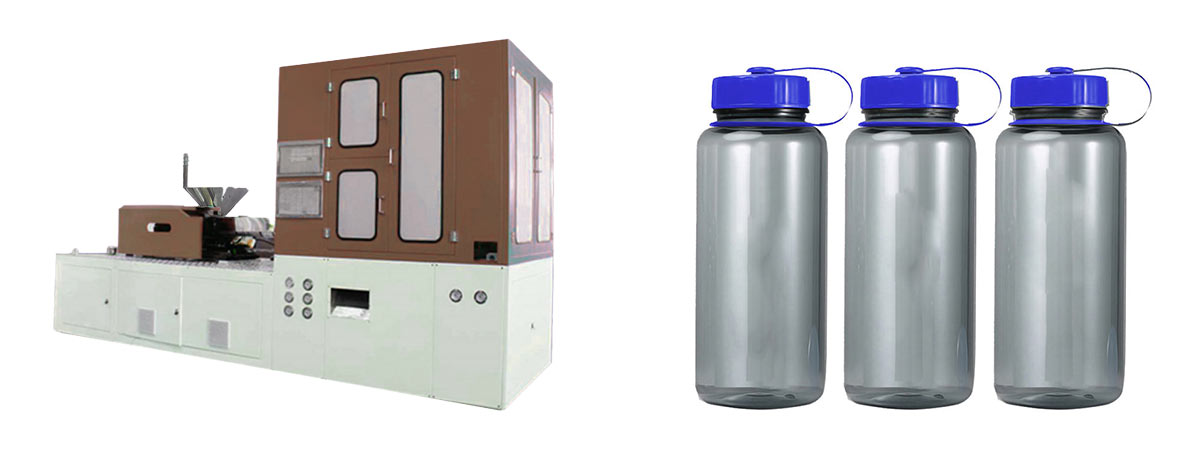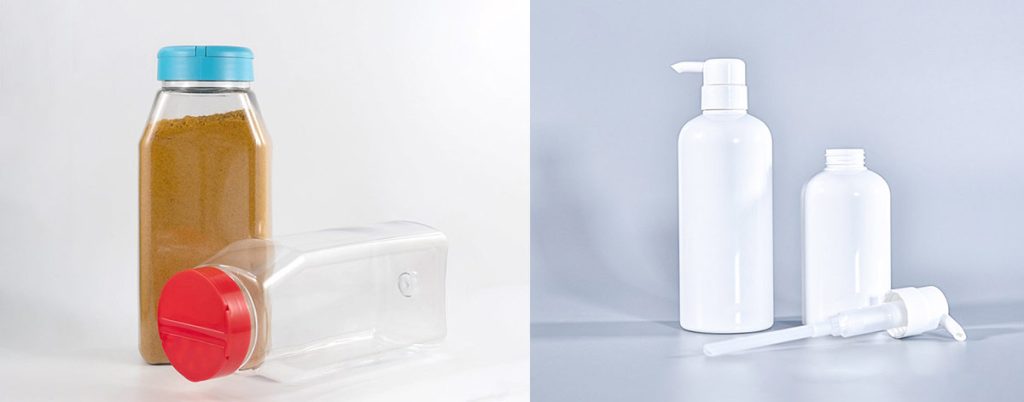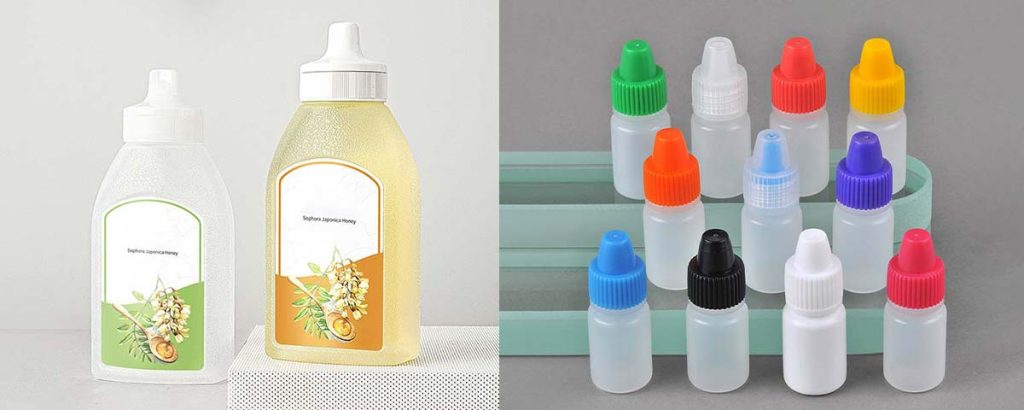

Sustainability drives innovation in blow moulding technologies. Companies choose recyclable materials to reduce waste and support eco-friendly production. Advanced machinery, such as ISBM machine, improves energy efficiency and lowers emissions.
Major brands now demand packaging with recycled content, and government regulations encourage recycled polymer use.
- Over half of consumers pay more for products from companies with positive environmental actions.
- Packaging with sustainability claims sees higher sales growth.
Key Takeaways
- Sustainability drives innovation in blow moulding. Companies can enhance their eco-friendliness by using recyclable materials and advanced machinery.
- Adopting eco-friendly practices can reduce waste and improve energy efficiency. This helps protect the environment and supports long-term sustainability.
- Investing in sustainable solutions leads to stronger customer loyalty. Over half of consumers are willing to pay more for products from environmentally responsible companies.
- Regulatory pressures are increasing. Companies must comply with strict recycling and waste management rules to remain competitive and avoid penalties.
- Sustainable practices boost employee morale and productivity. Workers feel more engaged when they contribute to environmental goals.
Sustainability in Blow Moulding Technologies
Environmental Impact
Sustainability plays a vital role in reducing the negative effects of blow moulding technologies on the planet. Traditional blow molding often creates several environmental challenges:
- Plastic waste and recycling issues arise when excess material ends up in landfills or pollutes natural habitats.
- High energy consumption increases the carbon footprint, especially when machines heat and extrude plastics without energy-saving features.
- Water usage in cooling processes can become excessive if not managed properly.
- Emissions and chemical exposure from certain plastics contribute to air and water pollution.
By adopting eco-friendly practices, manufacturers can address these problems. They can choose recycled or bio-based plastics, optimize energy use, and improve water management. These steps help protect the environment and support long-term sustainability.
Business Drivers
Sustainability in blow moulding technologies offers clear business advantages. Companies that invest in eco-friendly solutions often see stronger customer loyalty and higher sales. The following table highlights some key business outcomes:
| Evidence Type | Statistic |
|---|---|
| Consumer Willingness | 55% of consumers are willing to pay more for companies committed to positive social and environmental impact. |
| Sales Increase | Products with sustainability claims see a 2% average annual sales increase; those promoting sustainability actions see a 5% increase. |
| Employee Engagement | Highly engaged organizations have twice the success rate of lower engaged organizations. |
| Safety Incidents | Businesses with high engagement have 48% fewer safety incidents. |
| Quality Incidents | Businesses with high engagement have 41% fewer quality incidents. |
| Productivity | Engaged employees report higher productivity rates and lower absenteeism. |
Manufacturers that focus on sustainability also gain a competitive edge. They respond to growing consumer demand for eco-friendly products and meet the expectations of both customers and employees. Companies that lead in sustainable blow molding often report better productivity and fewer workplace incidents.
Regulatory Pressures
Environmental regulations shape the future of blow moulding machines. Governments worldwide now require companies to follow strict rules for recycling, waste management, and emissions. The table below outlines some of the most significant regulatory requirements:
| Regulatory Requirement | Description |
|---|---|
| Environmental Regulations | Increasingly important in the blow molding industry, focusing on sustainability practices. |
| Recycling Standards | Requirements for recyclability, use of recycled content, and proper labeling for recycling. |
| Waste Management | Regulations governing the management of solid and liquid waste generated during production. |
| Carbon Footprint Reduction | Focus on reducing carbon emissions through energy efficiency and renewable energy use. |
Recent government policies have accelerated the adoption of sustainable practices. For example, stricter environmental laws in the United States target plastic waste and promote higher recycling rates. The EPA aims for a 50% recycling rate by 2030, pushing manufacturers to innovate. State-level policies, such as California’s SB 54, set higher standards for packaging and encourage sustainable manufacturing. Early adopters of these practices often find new market opportunities and improve their competitiveness.
Sustainability ensures that blow moulding processes remain viable in the long term. Companies that adapt to changing regulations and market demands can thrive while protecting the environment and supporting their communities.
Sustainable Practices in Blow Molding
Eco-Friendly Materials
Manufacturers now prioritize eco-friendly materials in blow molding to support sustainability. They use recycled plastics, degradable plastics, and bio-plastics to create sustainable products. These materials offer several advantages:
- Eco-friendly materials, such as degradable plastics, break down naturally and help reduce environmental pollution.
- Recycled plastics decrease waste accumulation and lower resource consumption by reusing existing materials.
- Bio-based plastics, made from renewable resources like plant-based plastics, maintain similar performance to traditional plastics and reduce dependence on fossil fuels.
By choosing these materials, companies demonstrate green manufacturing practices and respond to growing demand for sustainable products. The use of plant-based plastics and bio-plastics also supports sustainability claims and aligns with global sustainability initiatives.
Recycling and Waste Management

Recycling plays a crucial role in minimizing the environmental impact of blow molding. Research shows that blow-moulded products, when recycled, can produce high-quality materials that sometimes surpass virgin plastics. For example, bottles made from 100% post-consumer HDPE have shown superior properties compared to those made from new plastics. Effective recycling systems reduce landfill contributions and enhance eco-efficiency. High levels of recycling help minimize resource depletion and support sustainability actions.
Many companies have launched successful recycling initiatives in blow moulding technologies. The table below highlights two notable examples:
| Company | Initiative | Outcome |
|---|---|---|
| Company A | Adopted PET blow moulding machines using 100% recycled PET | Significant reduction in material costs and improved sustainability ranking |
| Company B | Introduced lightweighting techniques in PET blow molding | 30% reduction in material usage, cost savings, and enhanced environmental profile |
These initiatives show how recycling and light-weighting plastics can lead to cost savings and improved environmental performance. Manufacturers who invest in recycling and waste management strengthen their sustainability claims and meet regulatory requirements.
Energy Efficiency and ISBM Machine
Energy efficiency remains a top priority in blow moulding technologies. Advanced machinery, such as the ISBM machine, helps manufacturers achieve significant energy savings. ISBM machine can reduce energy consumption by over 50% compared to older equipment. IntelliDrive machines also save up to 50% in energy use.
Modern blow molding equipment incorporates several energy-saving features:
- Hybrid machines combine hydraulic and electric systems for better efficiency and precision.
- Electric servo motors eliminate the need for hydraulic oil, offer faster cycle times, and create a cleaner production environment.
- Automated systems optimize temperature, pressure, and timing, reducing production errors and waste.
- Integrated sensors allow real-time monitoring and adjustments to avoid unnecessary resource use.
The table below summarizes recent advancements in energy-efficient blow molding machinery:
| Technology Type | Description |
|---|---|
| Energy Recovery Systems | Capture and reuse excess energy generated during cooling and compressed air processes, enhancing efficiency. |
ISBM machine supports sustainability goals by lowering energy consumption, reducing emissions, and enabling the use of recycled materials like rPET and rPP. These improvements help manufacturers meet sustainability initiatives and regulatory standards.
Process Innovations
Process innovations drive sustainability in blow molding. Manufacturers adopt new techniques to reduce resource consumption and improve product quality. The use of recycled materials, such as 100% recycled PET (rPET), lowers waste and carbon emissions while maintaining high standards.
Light-weighting plastics has become a popular strategy. Producing lightweight bottles leads to a 15% decrease in material consumption, providing both economic and environmental benefits. Stretch blow molding allows precise control over preform thickness and shape, which significantly decreases plastic waste compared to traditional methods.
The table below outlines key process innovations and their impact:
| Innovation Type | Description | Impact |
|---|---|---|
| Recycled Materials | PET Technologies’ machines use 100% recycled PET (rPET) | Reduces waste and carbon emissions while maintaining product quality. |
| Lightweight Bottles | Production of lightweight bottles | Contributes to a 15% decrease in material consumption, providing economic and environmental benefits. |
| Stretch Blow Molding | Allows precise control over preform thickness and shape | Significantly decreases plastic waste while ensuring product quality. |
ISBM machine further supports sustainability by optimizing processes and reducing errors. The machine manages production variables with precision, which minimizes waste and improves efficiency. These innovations help manufacturers produce sustainable products and meet the expectations of customers and regulators.
Benefits of Sustainability and Recycling
Customer Perception
Consumers now expect brands to demonstrate environmental responsibility. Companies that use sustainable packaging and eco-friendly practices in blow molding gain a clear advantage.
- Over 60% of U.S. consumers will pay more for products with sustainable packaging.
- Brands that highlight renewable and recyclable materials attract attention and loyalty.
- Companies prioritize eco-friendly production to meet both consumer expectations and regulatory demands.
Sustainable packaging helps brands stand out in a crowded market. Consistent messaging about sustainability builds trust and encourages repeat purchases. Eco-certifications on packaging and clear supply chain visibility further strengthen consumer confidence. When brands show a long-term commitment to sustainability, they form lasting relationships with their customers.
Employee Wellbeing
Sustainability initiatives in manufacturing have a positive impact on employee morale and productivity. Employees who participate in green practices feel a sense of pride and fulfillment.
- About 74% of employees find their jobs more meaningful when they contribute to environmental and social causes.
- In environmentally friendly offices, 93% of employees report higher job satisfaction.
- Companies with strong sustainability programs see a 16% boost in productivity and greater loyalty from their workforce.
A culture of sustainability encourages teamwork and innovation. Employees at companies like Patagonia, which has a 4% turnover rate, show higher retention due to the company’s commitment to environmental goals. When workers feel their efforts matter, they become more engaged and motivated.
Innovation and Cost Savings
Sustainability and recycling drive innovation in blow molding product design. Collaboration among manufacturers, suppliers, and consumers leads to new solutions, such as light-weighting plastics and closed-loop recycling systems. Companies like Coca-Cola and PepsiCo invest in advanced recycling technologies to improve rates and create eco-friendly products.
Cost savings also result from these efforts. Companies using 100% recycled PET and energy-efficient technologies report lower production costs and reduced carbon emissions. For example, optimized molding technology can achieve a 1.48-gram reduction per bottle, saving 1,184 metric tons of resin and eliminating 3,011 metric tons of carbon emissions annually. This translates to about $1 million USD in savings each year.
| Benefit | Description |
|---|---|
| Energy Efficiency | Plastic production uses less energy, generating fewer greenhouse gas emissions than alternatives. |
| Waste Reduction | Optimized production minimizes excess waste and ensures quality parts. |
| Use of Recycled Materials | In-house recycling and use of recycled materials reduce landfill waste. |
Sustainability in blow molding supports long-term business resilience by improving material efficiency, reducing maintenance costs, and allowing flexible production to meet changing market demands.
Conclusion

Sustainability shapes the future of blow moulding technologies by driving innovation and meeting industry demands. Industry leaders highlight the need for recycling, multilayer capabilities, and adaptability to new materials. Companies can take action by adopting water-based mold release agents, using recycled plastics, and implementing energy recovery systems. The next decade will see more bioplastics, circular economy principles, and smart automation. These steps help protect the environment, strengthen business performance, and support communities.
FAQ
What Materials Are Most Common in Sustainable Blow Molding?
Manufacturers often use recycled PET, HDPE, and bio-based plastics. These materials help reduce waste and support eco-friendly production. Many companies now choose plant-based plastics to meet sustainability goals.
How Does Energy Efficiency Improve Blow Molding Sustainability?
Energy-efficient machines, such as ISBM and all-electric models, use less power. They lower greenhouse gas emissions and reduce operating costs. These machines also help companies meet strict environmental standards.
Why Do Companies Invest in Recycling Systems for Blow Molding?
Recycling systems allow companies to reuse plastic waste. This reduces landfill use and saves raw materials. Companies also meet regulatory requirements and improve their environmental reputation.
What Role Do Regulations Play in Sustainable Blow Molding?
Governments set rules for recycling, waste management, and emissions. Companies must follow these rules to operate legally. Regulations encourage innovation and push manufacturers to adopt greener practices.
Can Sustainable Blow Molding Lower Production Costs?
Yes. Using recycled materials and energy-saving machines cuts expenses. Lightweight designs also use less plastic. These changes help companies save money and stay competitive.
